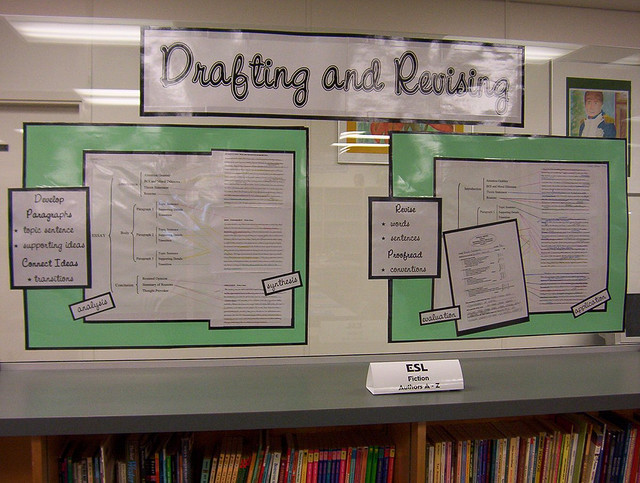Mentoring Process: Teaching Revision 19
This is a continuation of my posts on teaching revision/revising teaching, specifically of the latest post on process. If you’d like to contribute a guest post or response, please contact me at m [dot] salesses [at gmail etc.].
–
In the spirit of teaching the writing process, I’ve been having weekly meetings with my students, individually, in office hours. In a way I am doing this because of Margot Livesey, who made time for us at Emerson week after week to go over new drafts of the same stories. I learned more from these meetings than from any class or book or lecture. I used to send Margot a revision of my story each week and each week she would have the story completely marked up for our meeting, and she would respond both to suggestions I had taken and suggestions I had decided not to take. I would walk her through why I = made certain changes or not and what I was trying to do with each successive draft, how my idea of the story had changed. She showed me how to revise–she showed me how to think about every word and how to pay attention to the shifts a story goes through. She demonstrated (implicitly) what revision looked like for her and asked me to show her what revision looked like for me, even as I was actively learning how to revise from the marks she made and the way she rethought certain things in the story depending on what I had done with those marks.
This semester I felt that my students might benefit most from more attention to the sentence and to the value of each word in creating a sense of narrative meaning. I have felt at times that developing writers have come to my classes with a love of language but little thought about what makes language a story. But with the group I have now, I’ve sensed more of the opposite, that they have a feel for and a love of storytelling, and yet a distrust of the care with which each word should be selected.
One might call this the Color Blue Syndrome. As a student this semester put it, “sometimes the color blue is just the color blue.”
I remember having this thought as a college student, as a reaction against what I saw as over-interpretation in classes. I remember having this thought also as a reaction against what I saw as misinterpretation of my writing by my teachers and peers. In other words, the Color Blue Syndrome is a potential symptom of workshop–students may resist meaning because they hear their peers attributing meaning where they themselves didn’t intend it, and even worse, attributing problematic or misunderstood meaning.
Hearing how real live readers interpreted your story can be very helpful to a writer, but only–as I seem to write again and again here–if the workshop is actually the writer’s audience or has the tools and context with which to read (as much as possible) from the position/perspective of the writer’s intended audience. Otherwise, interpretation can have a negative effect for writers who already feel on the outside in the workshop. For example, the writer hears a comment like She must be taking off her shoes because she feels unclean when it’s just something people do in certain homes, and she thinks, G*d, not everything is a fucking metaphor.
The truth is that this is really a matter of intentionality. The details that an author includes should be carefully chosen. If the intended audience is supposed to see the shoes come off, if that detail is left in, it does mean something. Maybe it means: I see you, or This story is for you. Or maybe it’s not necessary, if really no meaning at all is important to the author. Then it can be taken out or left as implication.
These kinds of choices become ever more important when space is limited, so I asked my students to produce for our meetings a story of 100 words, something that fulfilled whatever requirements they saw a story as having.
–
Part 2 of this post will continue with more about what we do with these 100 word stories.

